+HUMAN DESIGN LAB
Localising the Circular Economy
The circular economy is what different organisations and governments use to organise and distribute available resources, aimed at eliminating waste. Waste materials and energy should become the input for other processes. In this case study, we explored the various ways we can localise the circular economy. We began by finding the roots of the pollution problem.
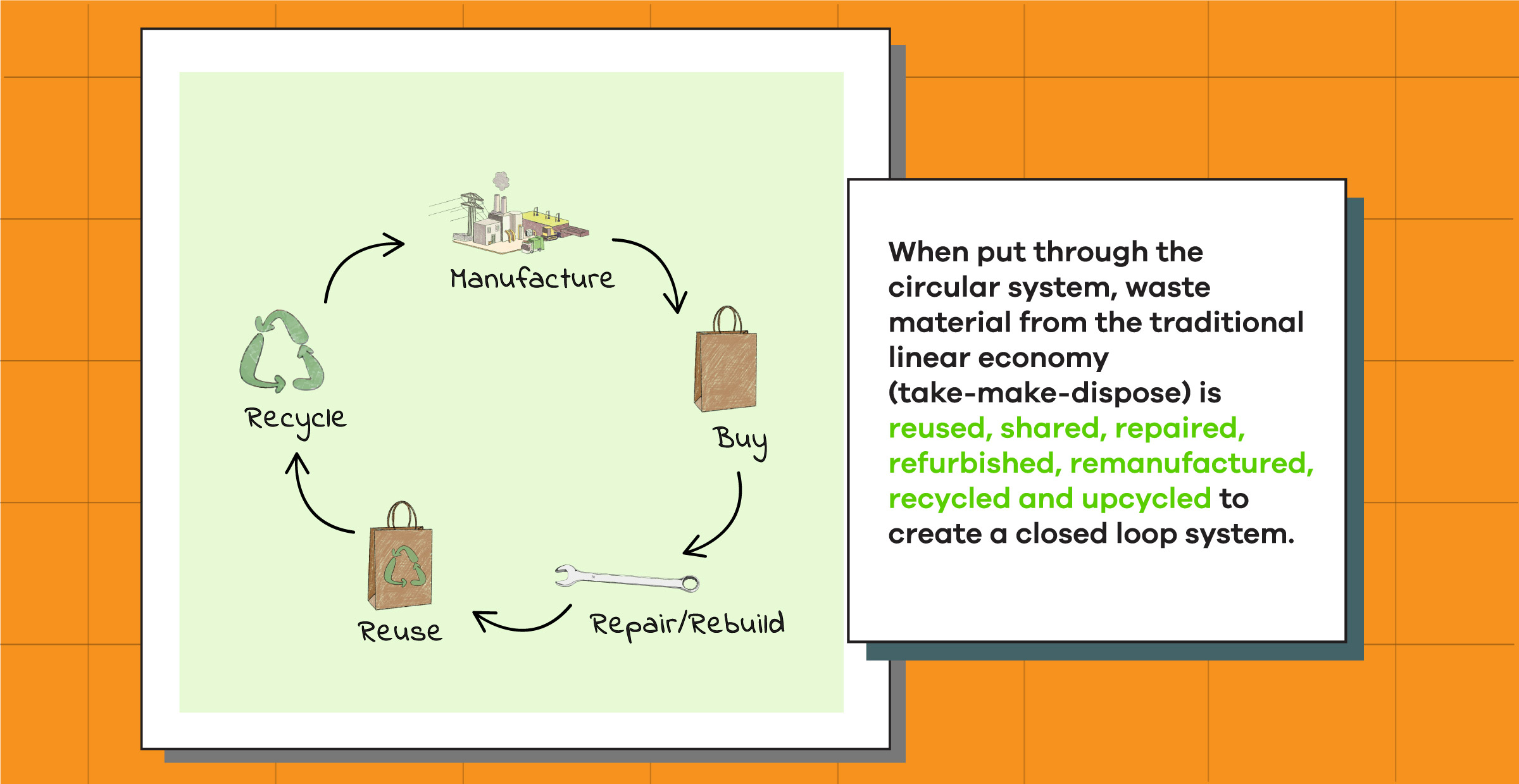
When put through the circular system, waste material from the traditional linear economy (take-make-dispose) is reused, shared, repaired, refurbished, remanufactured, recycled and up-cycled to create a closed-loop system. This minimises the use of resource inputs and the creation of waste, pollution and carbon emissions.

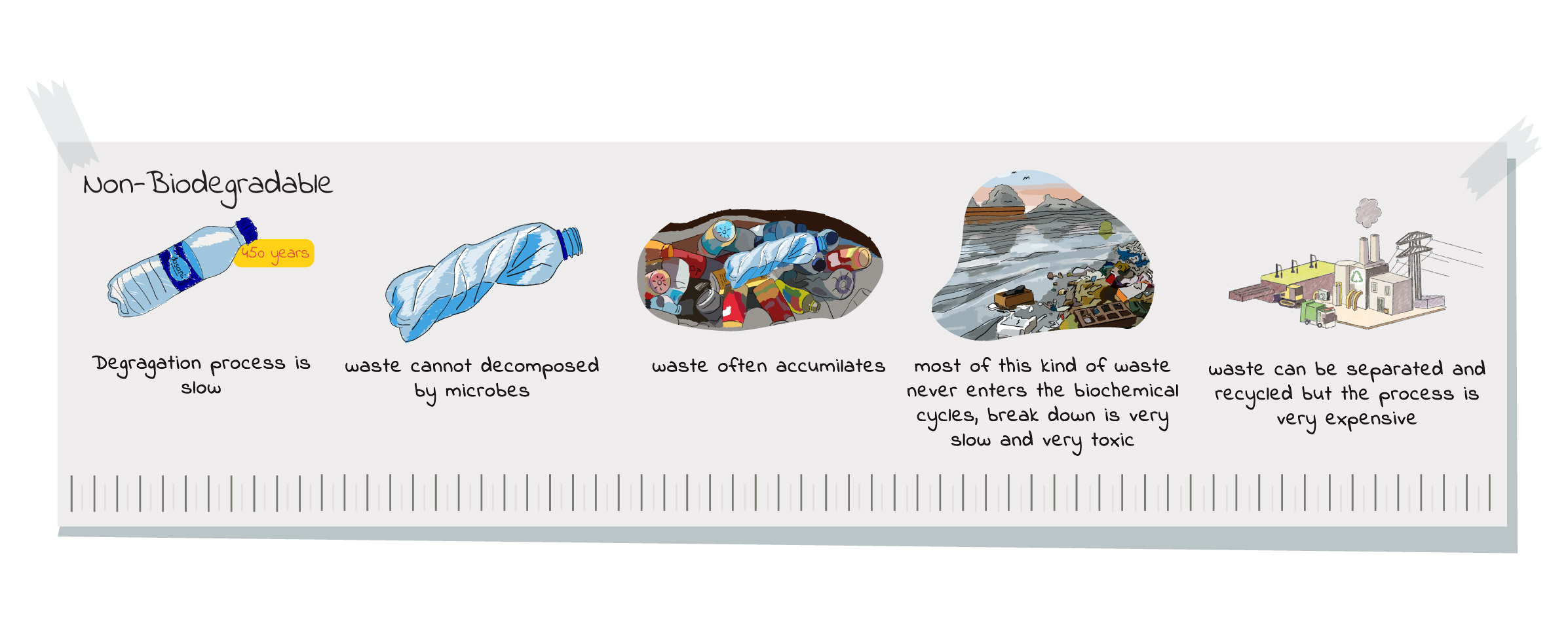
A banana peel typically takes about one to two years at most to decompose, because it is a natural substance that can be broken down by microorganisms. A plastic bottle cannot, so it stays around the planet for nearly 450 years.
Understanding Plastics
A breakdown of the types of plastics in the market
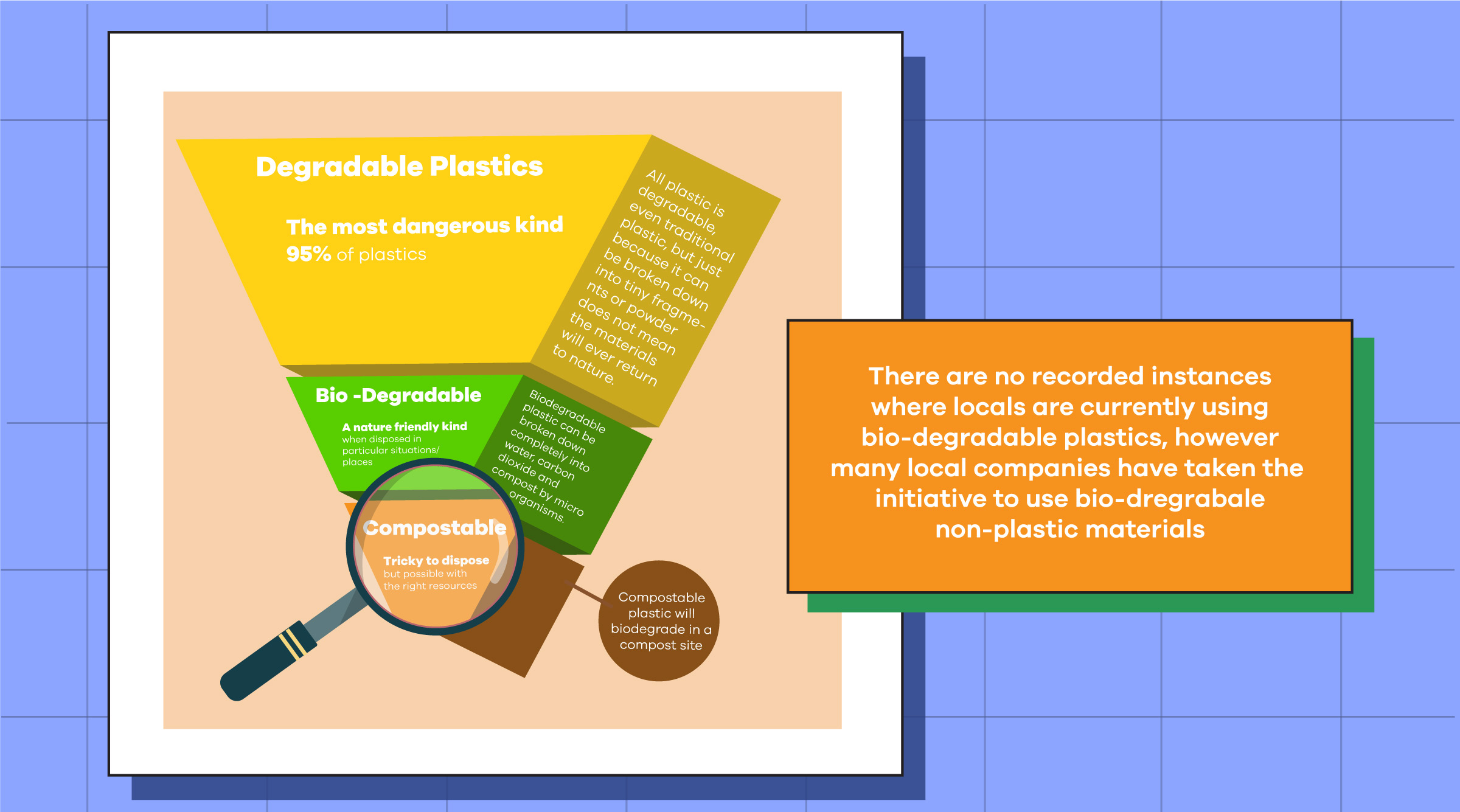
Degradable
All plastic is degradable, even traditional plastic. But just because it can be broken down into tiny fragments or powder does not mean the materials will ever return to nature. Some additives to traditional plastics make them degrade more quickly. Photodegradable plastic breaks down more readily in sunlight; oxo-degradable plastic disintegrates more quickly when exposed to heat and light.
Biodegradable
Biodegradable plastic can be broken down completely into the water, carbon dioxide and compost by microorganisms under the right conditions. “Biodegradable” implies that the decomposition happens in weeks to months. Bioplastics that don’t biodegrade quickly are called “durable,” and some bioplastics made from biomass that cannot easily be broken down by microorganisms are considered non-biodegradable.
Compostable
Compostable plastic will biodegrade in a compost site. Microorganisms break it down into carbon dioxide, water, inorganic compounds, and biomass at the same rate as other organic materials in the compost pile, leaving no toxic residue.
Understanding Fast-Moving Consumer Goods (FMCGs)
Role of FMCG in current (linear) economy
FMCG corporations are a predominant force behind the throwaway economic model driving the plastic pollution crisis.

Localising the Circular Economy
Local waste journey map
In East Africa, a majority of waste is not separated until it gets to the dumpsite. The region is becoming more and more conscious of the value of having a circular economy with examples like Rwanda banning plastic bags in 2005. Kenya did the same in 2017 and is now implementing a ban on plastic bottles.
This consciousness has trickled down to increasing countries (Cote d’Ivoire, Ethiopia, Ghana, Malawi, Mali, Mauritania, Mauritius, Nigeria, Senegal, South Africa, Tanzania, Uganda and Zanzibar), organisations and individuals.
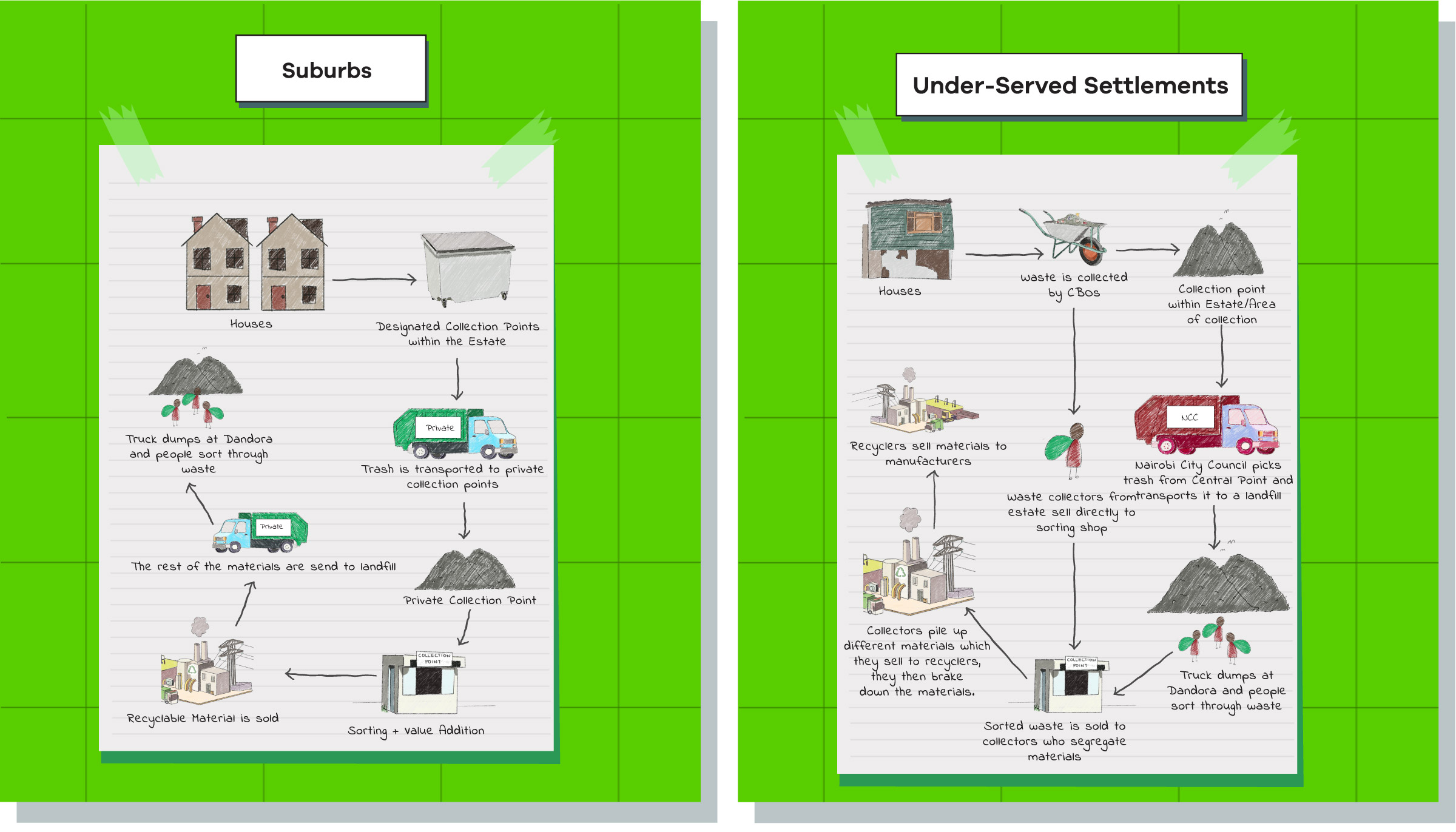
Implementation of the circular economy in Kenya
The number of waste disposal improvements and local plastic waste innovators is growing. A majority exist in the space between sorting and pre-processing, with the number of recyclers increasing.
They have used recycled plastics to make bricks that have been used for a school footpath.
They turn plastic waste into valuable products, like pots for plants and kitchen utensils. Their solutions see people as the key element to fix the plastic mess. Precious Plastic approaches count on people to bring about the necessary change. Small steps, multiplied by millions. “That’s where we can win our battle.” They don’t believe in techno-utopian, fix-it-all, dream technology. Precious Plastic is a combination of people, machines, platforms and knowledge to create an alternative global recycling system.
A social enterprise that upcycles washed-up flip-flops found along the beaches and waterways in Kenya. Inspired by the toys children were making out of the flip-flop debris, Julie Church, the Ocean Sole Founder, encouraged mothers to collect, wash and cut the discarded flip-flops into colourful products to sell at local markets as a means of income for their families.
Leaders in creating awareness around the harmful nature of plastic waste in the environment and educating communities on good practice, they have grown into capacity building for plastic waste recycling by providing open-source instructions for machinery and supporting new organisations to set up their recycling spots with skills.
Vintz plastics is one of Kenya’s leading recycling companies and operates as a social enterprise focused on developing viable sustainable solutions in the circular economy through recycling and waste management with the goal of a greener planet and cleaner environment for future generations.
They are a Kenyan plastics recycling start-up. They buy collected used consumer plastics and industrial waste as feedstock and sell recycled plastic pellets of different colours and qualities. They recently received from DOB Equity (Dutch family-backed investment organisation active in East Africa) and Global Innovation Fund (partnership with Unilever) to scale their business model.
Local Case Study: Social Bites

The journey map revealed players in the wrappers journey. We have popsicle vendors and popsicle customers. After conversations and co-creation sessions with the identified players, four opportunities for a take-back scheme emerged.
Conclusion
FMCG Packaging Done Right
At the end of the day, our biggest goal is to reach a place where we have the perfect harmony between packaging things right whilst keeping our environment clean and free of non-biodegradable by products.
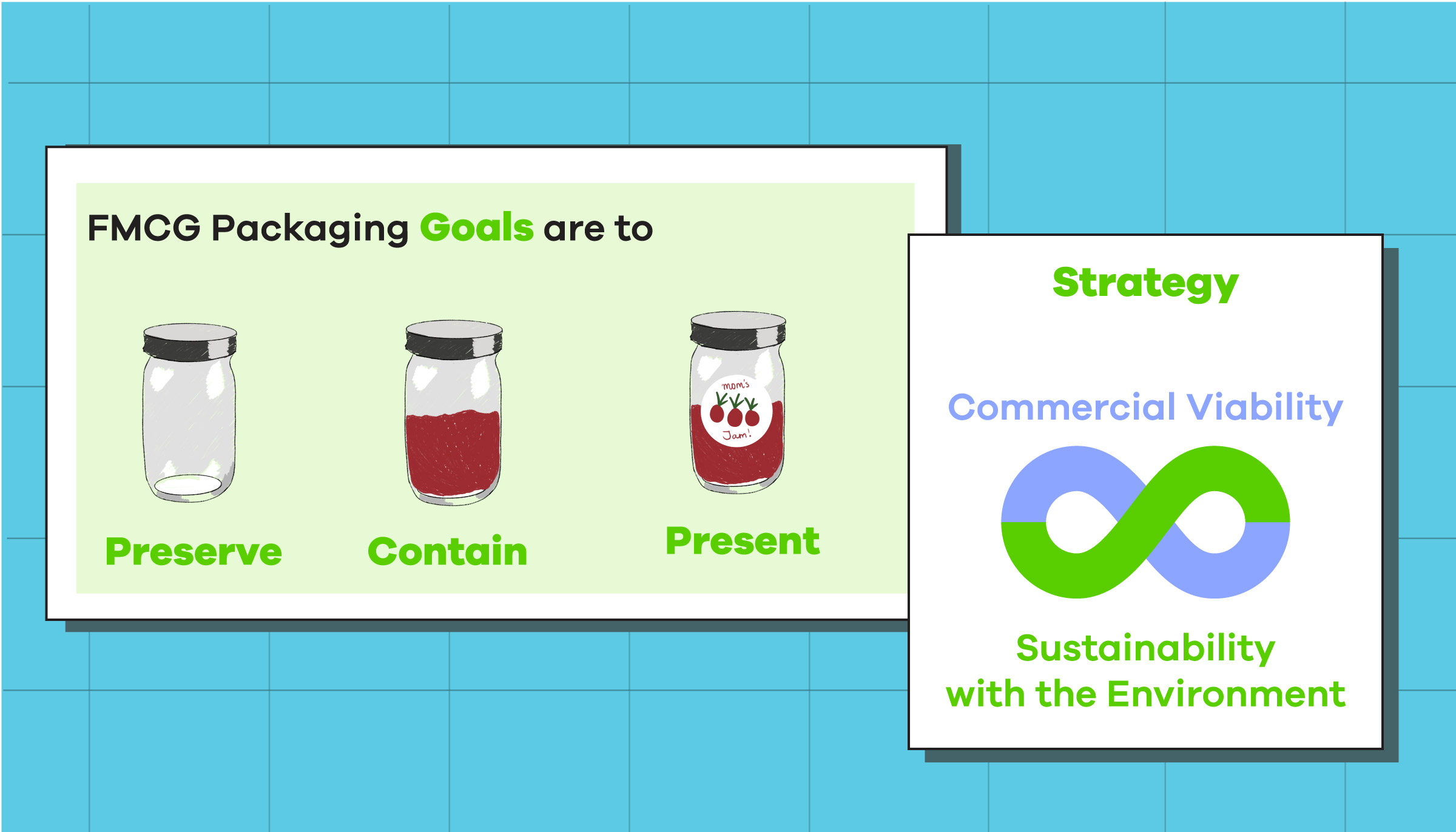
Here are some examples of how this is being done locally.
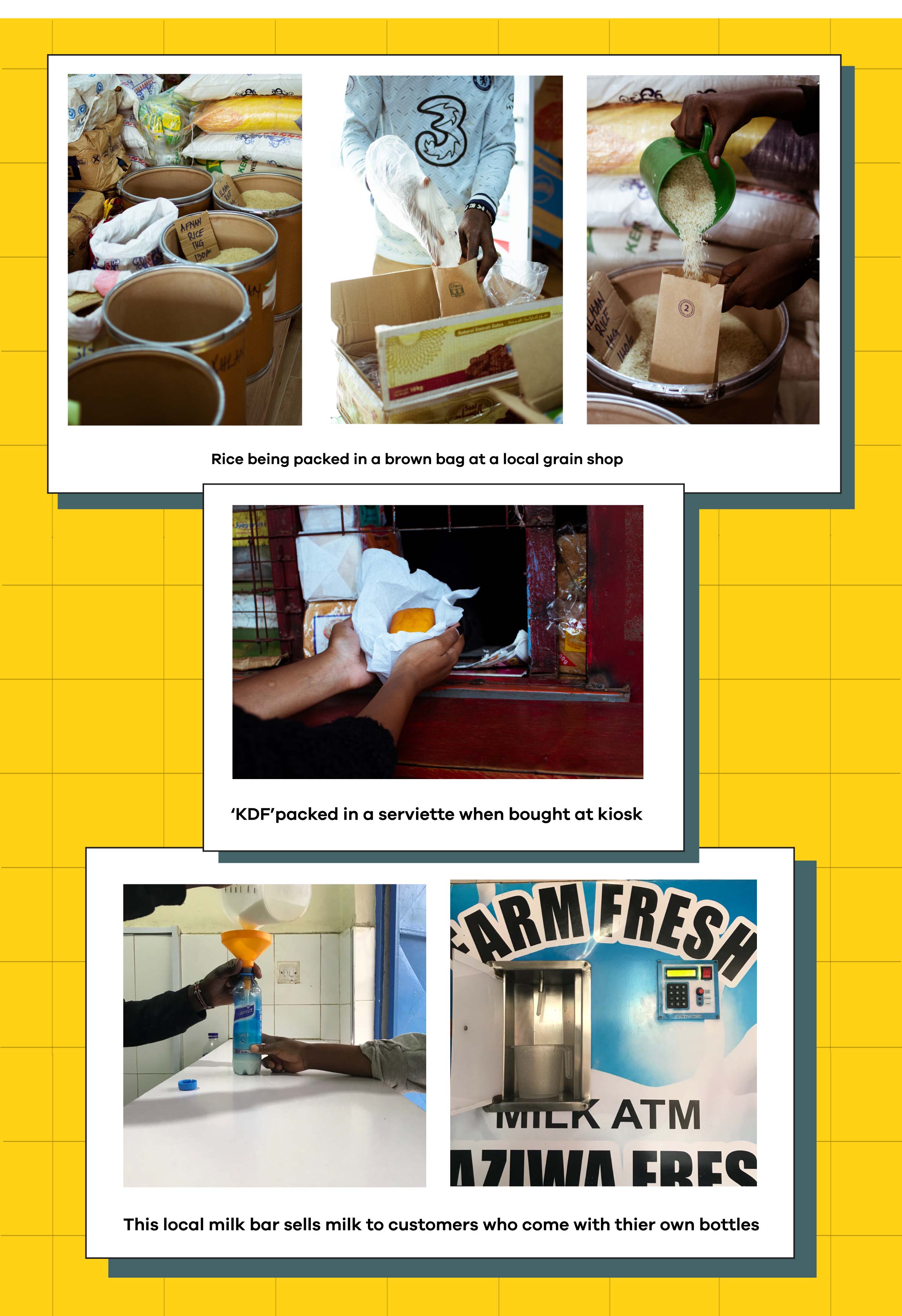
Our environment pays the price for human convenience; where do we draw the line? What is the right tradeoff?